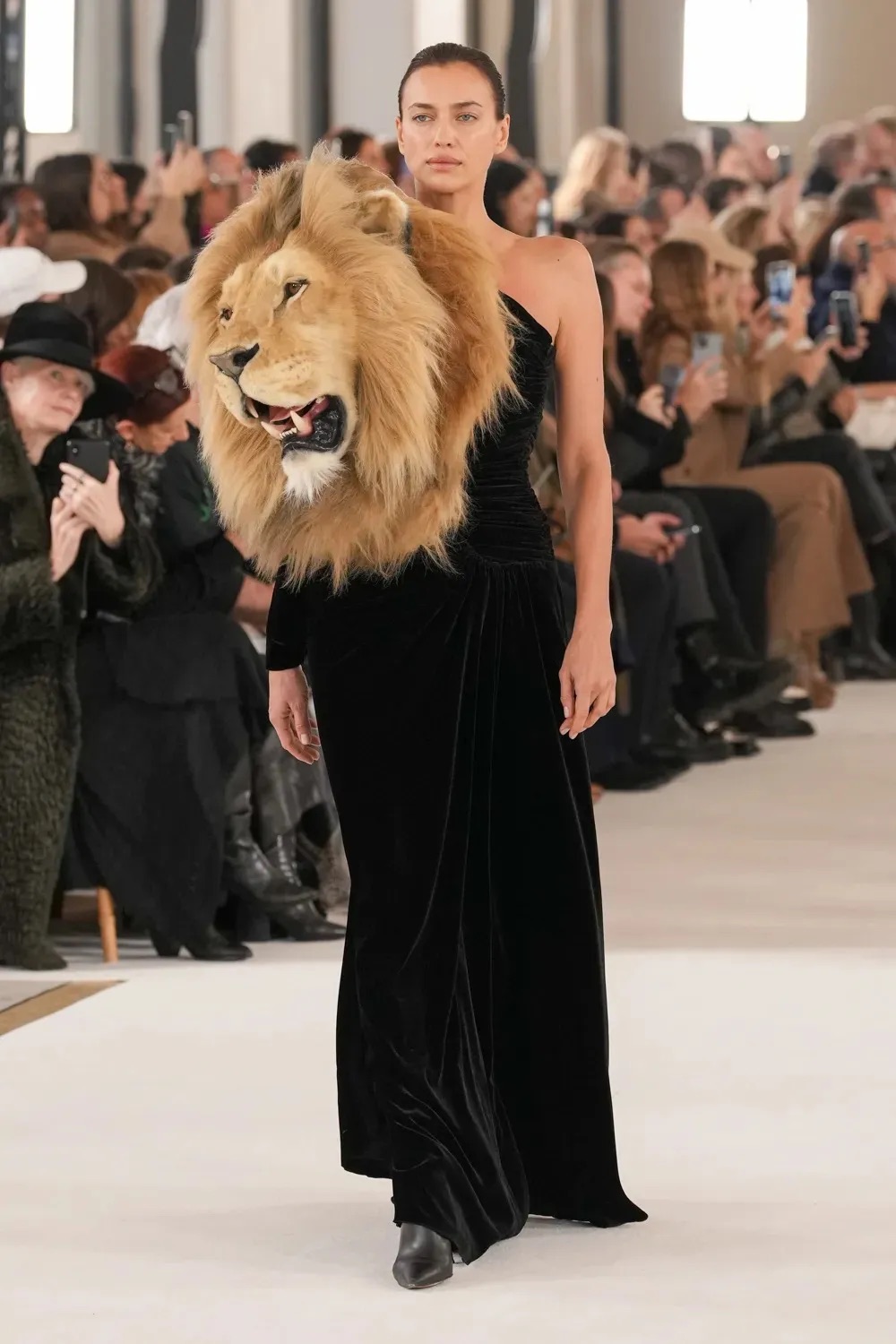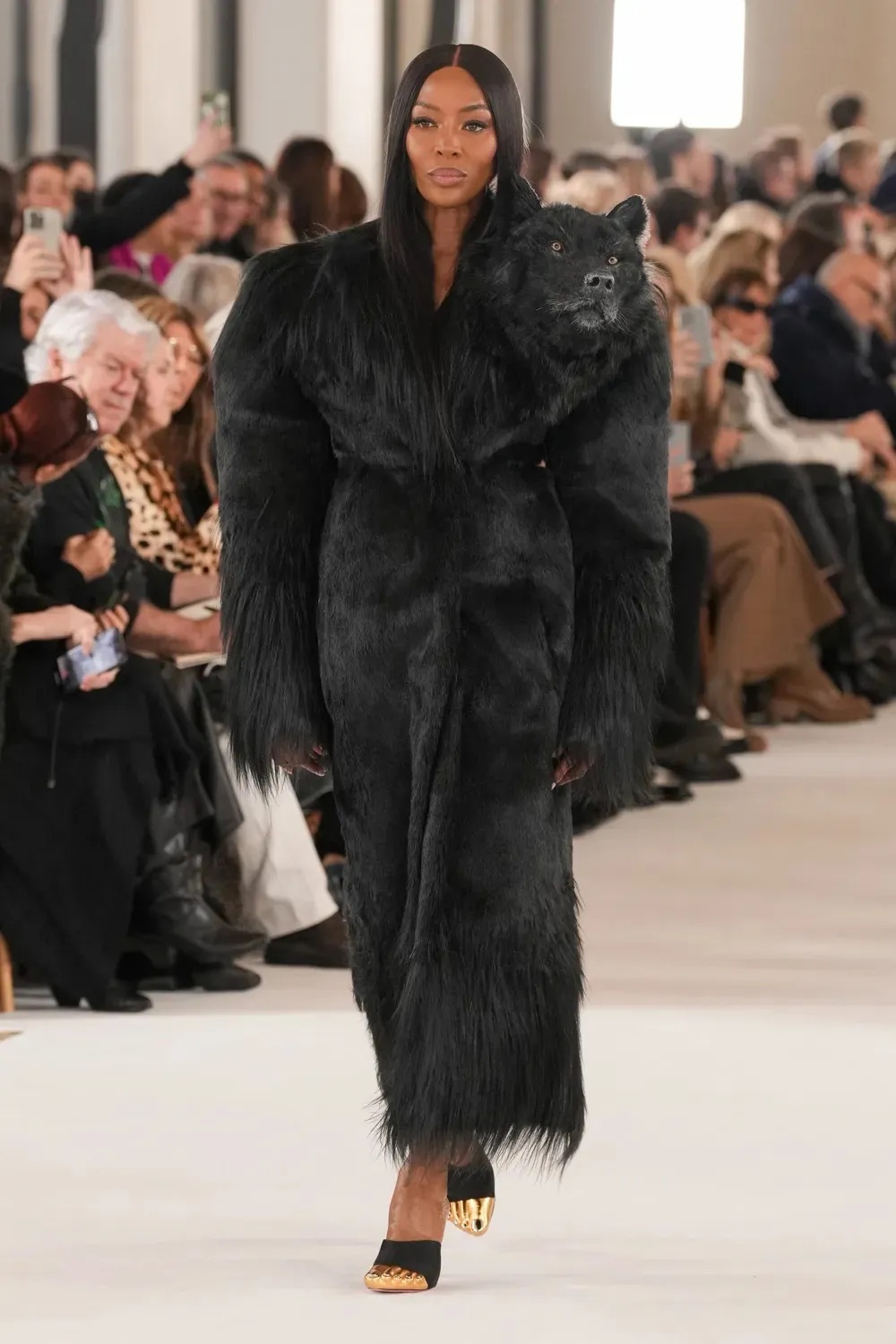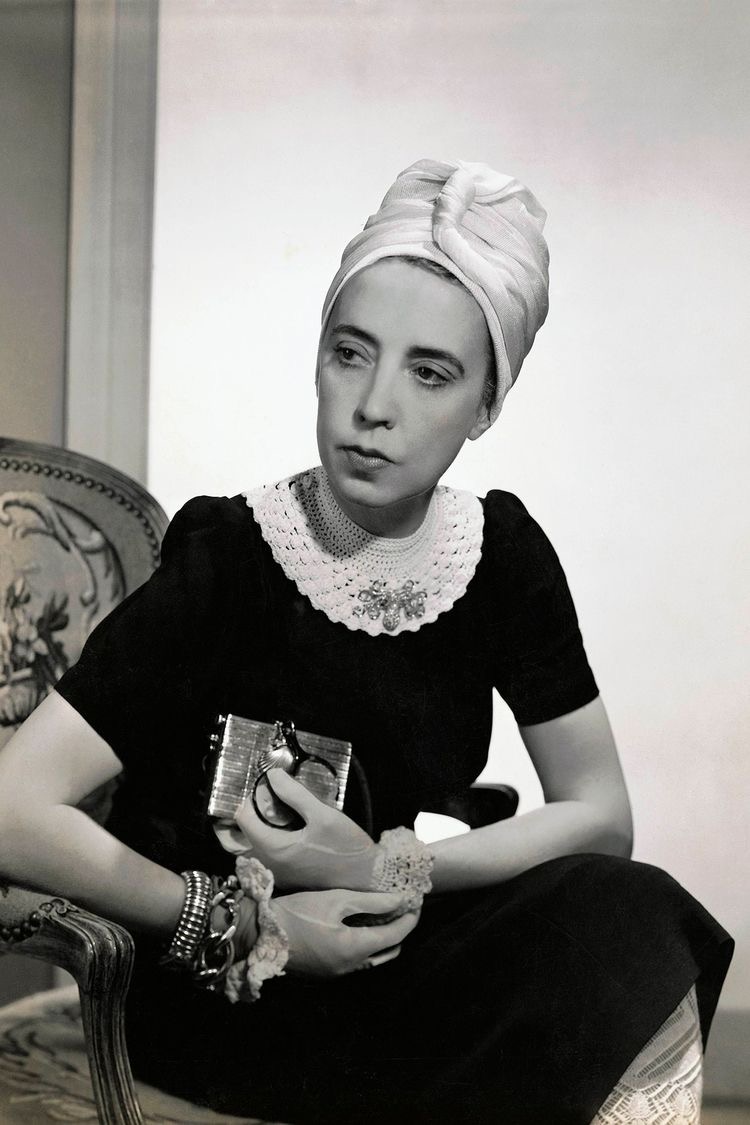1. Schiaparelli: from Rome to Paris with love
Elsa Schiaparelli (Rome, 1890 – Paris, 1973) – or Schiap as she called herself in the third person – was born into a family of Piedmontese intellectuals. Her father was a translator of Arabic poets and director of the Accademia Nazionale dei Lincei, while her mother was a descendant of the Medici family. She was also the niece of a great astronomer of the time. At a young age, her parents sent her to study philosophy at the University of Rome, although her dream was to become an actress. Afterwards, she published a book of erotic poetry (Arethusa), which shocked her family and so her parents sent her to a convent in Switzerland. Later she moved to London, where she met the flamboyant Theosophist Count Wilhelm Wendt de Kerlor, whom she married in 1914. Soon after their marriage, they moved to New York. It was during this time that Schiap became friends with Gabrielle Buffet-Picabia, wife of the French painter Francis Picabia. From then onwards, her life began to metamorphose…Gabrielle was responsible for introducing her to the avant-garde circle, starting with Duchamp, Man Ray and Steichein. In 1920, she gave birth to her daughter Yvonne with Count Wilhelm Wendt of Kerlor, but a few years later she filed for divorce. Dealing with the separation, Schiap moved to Paris with her daughter and, despite being “very Italian”, it is in the French capital where she achieved her great popularity in Fashion.
1. Schiaparelli: de Roma a Paris, com amor
Elsa Schiaparelli (Roma, 1890 – Paris, 1973) – ou Schiap como ela se chamava em terceira pessoa – nasceu em uma família de intelectuais piemonteses. Seu pai foi tradutor de poetas árabes e diretor da Accademia Nazionale dei Lincei, enquanto sua mãe era descendente da família Medici. Também era sobrinha de um grande astrônomo da época. Ainda jovem, seus pais a colocaram para estudar filosofia na Universidade de Roma, embora seu sonho era se tornar atriz. Depois, publicou um livro de poesia erótica (Arethusa), o que chocou sua família e fez com que seus pais a enviassem para um convento na Suíça. Um pouco mais tarde, mudou-se para Londres, onde conheceu o extravagante teosofista Count Wilhelm Wendt de Kerlor, com quem se casou em 1914. Logo após o casamento, passaram a viver em Nova York e foi durante essa época que Schiap se tornou grande amiga de Gabrielle Buffet-Picabia, esposa do pintor francês Francis Picabia. A partir de então, sua vida passou a se metamorfosear…Gabrielle foi a responsável por introduzi-la ao círculo da avant-garde, iniciando por Duchamp, Man Ray e Steichein. Em 1920, deu à luz a sua filha Yvonne com o Count Wilhelm Wendt de Kerlor, porém alguns anos depois ela viria a pedir o divórcio. Com a ruptura do casamento, Schiap se mudou para Paris com sua filha e, apesar de ser “italianíssima”, é na capital francesa onde atingiu sua grande popularidade na Moda.
2. The Fashion according to Elsa Schiaparelli
During the mid-1920s, Elsa Schiaparelli becomes a freelance designer in Paris. In 1927, she opened his own company in his apartment. For her designs, she started with concepts through which she could express herself with naive “pinch”.

Still in 1927, she launches the iconic “Cravat” Jumper, a knitted pullover sewn by hand using the trompe-l’œil technique in black and white details. Schiap decides to use it at a society luncheon, which catches people’s attention and becomes a huge success. Soon, numerous requests for the pullover came in and Vogue magazine labeled it as a “masterpiece”. So, she starts using the trompe-l’œil technique on ties and scarves as well. At the same time, the Surrealism Movement begins to take shape in Europe, although its beginning dates back to 1924 when André Breton launches the “Surrealist Manifesto”. However, only in the 1930s the artistic movement reach notoriety in New York, Paris and London. And, of course, Schiap is influenced by Surrealism, but always bringing her own personal touch. She crosses barriers in her designs for sportswear, evening wear and daywear, delivering innovations in fabric manipulation and cutting patterns, as well as in the meticulous Haute-Couture techniques. For example, she began using the zipper in bright colors, even though it was first patented in 1893 for underwear, utilitarian dresses and luggage.

In addition to collaborations with Christian Bérard and Jean Cocteau, Elsa Schiaparelli receives appreciation for her creations designed with Salvador Dalí. Of the various collaborations between Schiap and Dalí, it is possible to mention the “Woman’s Dinner Dress” (1937), designed in silk organza with the print of a large lobster designed by the Spanish artist himself.

The surrealist was also responsible for collaborating in the design of hats, shoes and even a female suit with drawings of mouths instead of pockets. Still in 1937, Schiap designs two versions of hat, the famous “Shoe Hat” (1937-8), inspired by a portrait of Dalí wearing a woman’s shoe on his head. She created two versions of the hat, one completely in black and the second that mimics the heel of the shoe in fuchsia pink silk velvet.

The year 1937 is notably important for Schiap, the same time that she launches her perfume “Shocking” with a bottle that resembles the silhouette of the American sex symbol Mae West, decorated with porcelain flowers and a velvet measuring tape.

Furthermore, she creates the shocking pink color, which is permeated in shades of blue to reach the final pigment. It should not be forgotten that the Italian designer is responsible for starting to create thematic collections in Fashion. In the “Le Cirque” collection, together with Dalí, she designed the “Tears dress” (1938), a monumental dress with a headscarf on which tears are printed using her trompe-l’œil technique. The prints were rigorously lined in pink and magenta.

Also it is possible to see the beautiful contrast proposed by Schiap between daywear and evening wear. While the former is meticulously custom designed, the evening wear has a more sexual connotation, such as the “Skeleton Dress”, designed by Schiaparelli and Salvador Dalí in petticoat in silk crêpe. The chronological list of her creations could go on for pages and pages. It is simply Schiap…

2. A Moda segundo Elsa Schiaparelli
Durante a metade da década de 1920, Elsa Schiaparelli se tornou uma freelance designer em Paris. Em 1927, abriu sua própria empresa dentro de seu apartamento. Para os seus designs, iniciou por conceitos pelos quais ela pudesse se expressar com “pitadas” ingênuas. Ainda em 1927, lançou o icônico “Cravat” Jumper, um pulôver de tricô costurado à mão com técnica de trompe-l’œil em detalhes de preto e branco. Schiap decide usá-lo em um almoço da sociedade, o que chama atenção das pessoas e vira um grande sucesso. Logo, vieram inúmeros pedidos do pulôver e a revista Vogue o rotula como “obra-prima”. Depois, ela começa a usar a técnica de trompe-l’œil também em gravatas e lenços. Paralelamente, o movimento artístico do Surrealismo começa a ganhar forma na Europa, ainda que o seu início remonta a 1924 quando André Breton lançou o “Manifesto Surrealista”. Porém, apenas na década de 1930 o movimento atinge notoriedade em New York, Paris e Londres. E, claro, Schiap é influenciada pelo Surrealismo, mas sempre trazendo seu toque pessoal. Ela cruza barreiras nos seus designs criados para sportswear, evening wear e daywear, trazendo inovações na manipulação de tecidos e modelagens, como também nas meticulosas técnicas de Haute Couture. Por exemplo, em 1935 ela começou a usar o zíper em cores vibrantes, ainda que esse fecho foi inicialmente patenteado em 1893 para roupas íntimas, vestidos utilitários e bagagens.
Além de fazer colaborações com Christian Bérard e Jean Cocteau, Elsa Schiaparelli recebe apreço em suas criações projetadas junto com Salvador Dalí. Das diversas colaborações entre Schiap e Dalí, é possível citar o “Woman’s Dinner Dress” (1937), projetado em organza de seda e com a estampa de uma grande lagosta desenhada pelo próprio artista espanhol.
O surrealista também foi responsável por colaborar em projetos de chapéus, sapatos e até um tailleur feminino com desenhos de bocas no lugar dos bolsos.
Ainda em 1937, Schiap projeta duas versões de chapéu, o famoso “Shoe Hat” (1937-8), inspirado num retrato de Dalí usando um sapato feminino em sua cabeça. Ela criou duas versões do chapéu, um totalmente em preto e o segundo que mimetiza o salto do sapato em veludo de sedana cor rosa fúcsia.
O ano de 1937 é notavelmente marcante para Schiap, mesma época em que ela lança o seu perfume “Shocking”, cujo frasco lembra a silhueta da sex symbol americana Mae West, decorado em flores de porcelana e uma fita métrica de veludo.
Além disso, Schiap cria a cor rosa shocking, a qual é permeada em tons de azul para atingir o pigmento final.
Não se pode esquecer que a designer italiana é responsável por começar a criar coleções temáticas na Moda. E na coleção “Le Cirque”, ela projeta com Dalí o “Tears dress” (1938), um monumental vestido com véu na cabeça em que são estampadas lágrimas com a sua técnica de trompe-l’œil. As estampas foram rigorosamente forradas em tecidos na cor rosa e magenta.
Também é possível perceber o belíssimo contraste proposto por Schiap entre o daywear e evening wear. Enquanto aquele é meticulosamente projetado sob medida, o evening wear possui uma conotação mais sexual, como o “Skeleton Dress”, criado em colaboração com Salvador Dalí com anágua em crepe de seda. E a lista de suas criações poderia se estender por páginas e páginas. É simplesmente Schiap…
3. Coco Chanel’s rival: “that Italian artist who makes clothes”
Alongside her brilliant career, something that marked the 1930s and 1940s is the rivalry between Coco Chanel and Elsa Schiaparelli. While Coco had a taste for white, black and beige, Schiap loved vibrant colors and eccentricity. Although both were popular in Fashion at the same time, their concepts and proposals were completely different. Not only Gabrielle, but also Schiap’s style caught the attention of artists of the time, including Wallis Simpson and Marlene Dietrich. The dispute between the two was fought exactly in the period between the two Great World Wars. As Coco described her, Schiap was “that Italian artist who makes clothes”. Ironically or not, Schiaparelli’s boutique on Place Vendôme is not far from 31 Rue Cambon. However, the following years brought new challenges. After the end of World War II, the sense of Fashion and Haute-Couture changed completely, which is why in 1954 Elsa decides to close her boutique and focus on writing her autobiographical book, “Shocking Life”. In 1973, Schiap died in her sleep.
3. A rival de Coco Chanel: “a artista que faz vestidos”
Ao lado de sua brilhante carreira, algo que marcou nas décadas de 1930 e 1940 é a rivalidade entre Coco Chanel e Elsa Schiaparelli. Enquanto Coco tinha o gosto para branco, preto e bege, Schiap amava as cores e a excentricidade. Ainda que ambas possuíam popularidade ao mesmo tempo na Moda, os seus conceitos e propostas se distinguiam por completo. Não apenas Gabrielle, mas também o estilo de Schiap chamou atenção de artistas da época, incluindo Wallis Simpson e Marlene Dietrich. A disputa entre as duas estava travada exatamente no período entre as duas grandes guerras mundiais. Como Coco a descrevia, Schiap era “a artista que faz vestidos”. Ironicamente ou não, a boutique de Schiaparelli na Place Vendôme não fica muito longe da 31 Rue Cambon. Todavia, os anos seguintes trouxeram novos desafios. Após o fim da Segunda Guerra Mundial, o senso da Moda e da Haute Couture mudaram por completo, razão pela qual em 1954 Elsa decide fechar sua boutique e focar na escrita de seu livro autobiográfico, “Shocking Life”. Em 1973, Schiap falece enquanto dormia.
4. Schiaparelli now
The company was renewed in 2013 with the entry of Italian designer Marco Zanini as creative director, who oversaw the Haute-Couture and Pret-à-Couture lines. The brand’s popularity has been rekindled since then and has been conquering the public’s taste, with great prominence in red carpets and fashion weeks. For his part, Daniel Roseberry, the brand’s current creative director, brings surrealist drama to his creations with the personal touch of Elsa Schiaparelli and crosses boundaries. It is basically selling dreams in a positive sense. Who doesn’t remember Bella Hadid on the red carpet of the Cannes Premiere, in its 74th annual edition, wearing an avant-garde gown from the Haute-Couture FW 2021/22 collection?
And, of course, his latest Haute-Couture SS 2023 collection which specifically reinterprets Dante Alighieri’s Inferno. He brings various references to Renaissance literature. The leopard, the lion and the wolf. Lust, pride and avarice. Shalom Harlow, Irina Shayk and Naomi Campbell represent these concepts in three different gowns.



Without entering the discussion of animalism, the perfection and rigor of how each of the gowns from the last collection was created is undeniable. And I dare say: Schiap must be happy to see where her brand has reached and how it has been crossing barriers. It is her legacy.
4. Schiaparelli agora
A empresa foi renovada em 2013 com o ingresso do designer italiano Marco Zanini como diretor criativo, que ficou encarregado das linhas de Haute-Couture e Pret-à-couture. A popularidade da marca se reacendeu desde então e vem conquistando o gosto pelo público, com grande destaque em red carpets e fashion weeks. Por sua vez, Daniel Roseberry, o atual diretor criativo da marca, traz o drama surrealista para suas criações, com o toque pessoal de Elsa Schiaparelli e cruza limites. É basicamente vender sonhos num sentido positivo. Quem não lembra de Bella Hadid no red carpet da Premiere de Cannes, em sua 74a edição anual, usando um vestido avant-garde da coleção de Haute-Couture FW 2021/22?
E, claro, a última coleção de Roseberry para a temporada de Haute-Couture SS 2023. A específica reinterpretação de Inferno de Dante Alighieri, a qual carrega as várias referências da Literatura do Renascimento. A onça, o leão e a loba. A lúxuria, o orgulho e a ganância. Shalom Harlow, Irina Shayk e Naomi Campbell representando os conceitos em três diferentes vestidos.
Não adentrando na discussão de correntes animalistas, é inegável a perfeição e o rigor de como cada um dos vestidos da última coleção foi criado. E ouso a dizer: Schiap estaria feliz por ver onde a sua marca chegou e como vem cruzando barreiras. É o seu legado.
EDUARDO FRECCIA




Stay connected